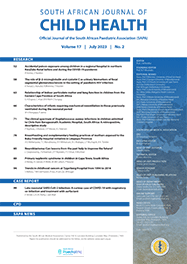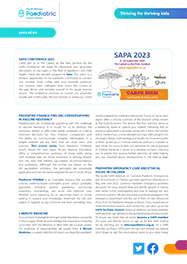Research

Incidence of preterm births in a referral teaching hospital in Ghana: What is the role of maternal age, parity, gravidity and stress during pregnancy?
Abstract
Background. Preterm births (PTBs) notably contribute to neonatal morbidity and mortality in neonatal intensive care units (NICUs). Therefore, an examination of maternal risk factors is essential in reducing the incidence of PTB.
Objective. To estimate maternal risk factors of PTBs with subsequent admission to the NICU.
Methods. We interviewed 357 mothers who gave birth at the Korle-Bu Teaching Hospital (KBTH) and their neonates admitted to the hospital’s NICU. A binary multivariate logistic regression model was used to analyse the odds ratios of each predictor variable.
Results. The incidence of PTBs associated with admission to the NICU was 70%. From our estimation model, maternal parity emerged as the single most influential risk factor of preterm neonates who subsequently had to be admitted to the NICU, contributing to a significant 17.3% of the model fit compared with 12.9% for maternal stress and 1% for maternal age. Approximately 35% of the mothers did not attend the minimum number of antenatal care (ANC) visits (four) recommended by the Ghana Ministry of Health, which may have increased their risk of PTB.
Conclusion. The most appropriate intervention to reduce the high risk of PTB is for expectant mothers to attend ANC during their pregnancy. Health professionals rendering ANC services should also educate mothers on how to avoid or manage stress during pregnancy to reduce the incidence of PTB.
Authors' affiliations
E Otieku, Institute of Statistical, Social and Economic Research, University of Ghana, Accra, Ghana
A P Fenny, Institute of Statistical, Social and Economic Research, University of Ghana, Accra, Ghana
A-K Labi, Department of Medical Microbiology, University of Ghana Medical School, University of Ghana, Accra, Ghana
U Enemark, Department of Public Health, Faculty of Health, Aarhus University, Denmark
Full Text
Cite this article
Article History
Date published: 2021-10-14
Article Views
Full text views: 459

.jpg)



Comments on this article
*Read our policy for posting comments here